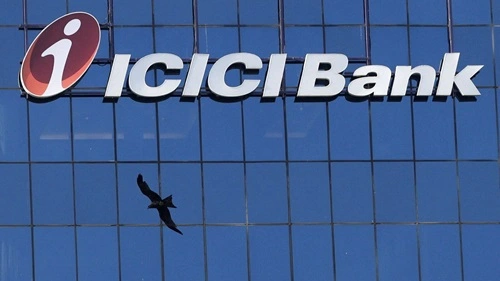ICICI Bank, one of India’s leading private sector banks, has been a significant player in the banking industry for decades. In 2024, the bank continues to maintain its position as a formidable force in the financial sector. This article delves into a SWOT (Strengths, Weaknesses, Opportunities, and Threats) analysis of ICICI Bank, offering a comprehensive overview of the factors influencing its operations and growth potential in 2024.
ICICI Bank Current Overview
ICICI Bank operates over 5,900 branches and approximately 16,650 ATMs across India. The bank has a strong international presence, with operations in 19 countries, making it one of the most globally connected Indian banks. ICICI Bank’s financial health is robust, with a capital adequacy ratio of 18.34% in FY23 and a significant increase in profit after tax (PAT), which grew by 36.7% to ₹318.96 billion.

Strengths
1. Strong Brand Identity and Extensive Network: ICICI Bank’s vast network of branches and ATMs across India gives it a significant advantage in reaching a wide customer base. The bank’s strong brand identity further solidifies its position as a reliable financial institution.
2. Robust Digital Infrastructure: ICICI Bank has made substantial investments in its digital platforms. The InstaBIZ app, which serves small and medium-sized enterprises (SMEs), had 1.5 million active users in FY23, highlighting the bank’s success in digital banking.
3. Global Presence: With operations in 19 countries, ICICI Bank is well-positioned to leverage international markets. This global footprint allows the bank to diversify its revenue streams and mitigate risks associated with the Indian market.
4. Solid Financial Performance: ICICI Bank’s financial metrics are strong, with a healthy capital adequacy ratio and growing profits, which indicate the bank’s stability and ability to withstand economic fluctuations.
Weaknesses
1. Intense Competition: ICICI Bank faces stiff competition from both private sector banks like HDFC Bank and Axis Bank, and public sector giants like State Bank of India (SBI). This competitive environment can put pressure on the bank’s market share and profit margins.
2. High Operational Costs: Maintaining its extensive branch network leads to high operational expenses. In FY22, the bank’s cost-to-income ratio was around 51.7%, which is higher compared to some of its peers, indicating room for improving operational efficiency.
3. Reputation Challenges: Periodic controversies, such as those involving former CEO Chanda Kochhar, have impacted ICICI Bank’s reputation. Such incidents can erode customer trust and negatively affect the bank’s brand image.
4. Limited Rural Penetration: Despite its extensive network, ICICI Bank has a limited presence in rural areas, with only about 15% market share. This indicates a significant opportunity for expansion, but also highlights the bank’s current weakness in reaching rural customers.
Opportunities
1. Digital Banking Growth: The digital payment market in India is expected to grow to USD 10 trillion by 2026. ICICI Bank has the opportunity to further expand its digital offerings, particularly through partnerships with fintech companies, to capture a larger share of this growing market.
2. Expansion into Rural Markets: With 42% of Indian households still unbanked, there is a substantial opportunity for ICICI Bank to expand its services into underbanked rural areas. Government initiatives aimed at financial inclusion, such as the Pradhan Mantri Jan Dhan Yojana, provide a favorable environment for this expansion.
3. Wealth Management Services: The wealth management sector in India is expected to grow at a CAGR of 14% from 2020 to 2025. ICICI Bank can capitalize on this trend by enhancing its wealth management services, catering to the growing demand for personalized banking.
4. Mergers and Acquisitions (M&A): The Indian banking sector is witnessing a trend of consolidation. ICICI Bank can explore strategic mergers and acquisitions to strengthen its market position and expand its service offerings.
Threats
1. Economic Slowdown: Any economic downturn or recession could significantly impact ICICI Bank’s operations. The Indian economy’s performance is crucial for the bank, and any slowdown could result in higher non-performing assets (NPAs) and reduced profitability.
2. Regulatory Changes: The banking sector is heavily regulated, and changes in regulatory requirements can pose challenges for ICICI Bank. Non-compliance with new regulations can result in hefty penalties and operational disruptions.
3. Competition from Fintech and NBFCs: The rise of fintech companies and Non-Banking Financial Companies (NBFCs) presents a significant threat to traditional banks. These entities are increasingly capturing market share, particularly in areas like digital payments and small loans, which could affect ICICI Bank’s bottom line.
4. Technological Disruptions: Rapid advancements in technology can render existing banking practices obsolete. ICICI Bank must continuously innovate to keep pace with technological changes and avoid being outpaced by more agile competitors.
Conclusion
ICICI Bank remains a strong player in the Indian banking sector in 2024, with a robust financial performance, extensive network, and significant growth opportunities. However, it faces challenges from intense competition, regulatory changes, and the need to expand into underbanked markets. By leveraging its strengths and addressing its weaknesses, ICICI Bank can continue to thrive in an increasingly competitive and dynamic banking environment.


